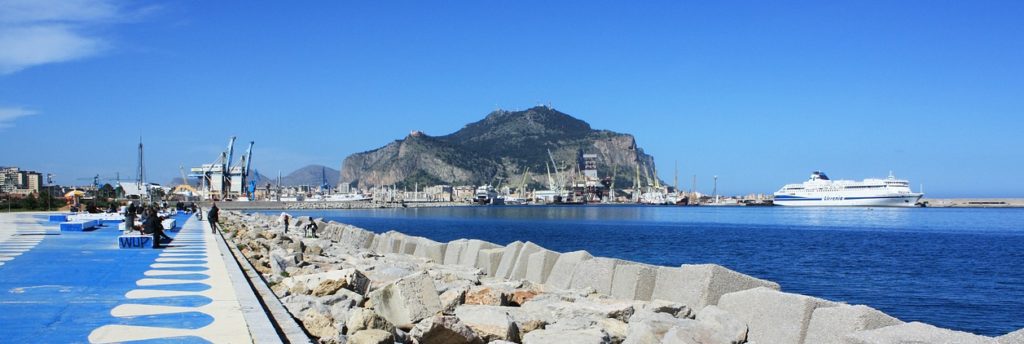
Throughout its history, Palermo![]() has experienced the domination of very different peoples. From the Phoenicians to the Romans, passing through the Greeks and the Arabs, without forgetting the reign of the Normans, the Swabians and the arrival of the Spanish and French masters. From a historical and artistic point of view, Palermo is the most important city in the region of Sicily. Discover with us the most beautiful sights to see, the characteristic cuisine, and the best neighbourhoods to enjoy in the evenings during the summer season, taking advantage of the ideal climate offered by the Sicilian island.
has experienced the domination of very different peoples. From the Phoenicians to the Romans, passing through the Greeks and the Arabs, without forgetting the reign of the Normans, the Swabians and the arrival of the Spanish and French masters. From a historical and artistic point of view, Palermo is the most important city in the region of Sicily. Discover with us the most beautiful sights to see, the characteristic cuisine, and the best neighbourhoods to enjoy in the evenings during the summer season, taking advantage of the ideal climate offered by the Sicilian island.
What to see in Palermo
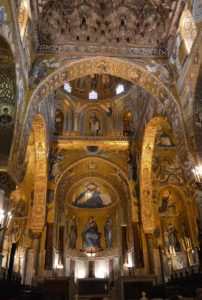
Among the most photographed attractions by foreign tourists visiting Palermo is the Norman Palace (or Palazzo Reale)![]() , one of the main monuments of the Sicilian capital. Inside, it houses authentic artistic treasures, such as the Palatine Chapel. For the past 70 years, from the end of World War II to the present, it has housed the Sicilian regional assembly.
, one of the main monuments of the Sicilian capital. Inside, it houses authentic artistic treasures, such as the Palatine Chapel. For the past 70 years, from the end of World War II to the present, it has housed the Sicilian regional assembly.
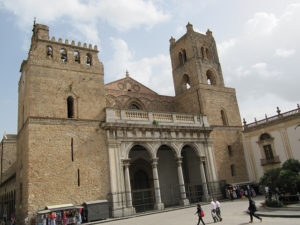
While the Royal Palace is the symbol of Norman domination, the Monreale cathedral ![]() represents the brightest testimony of Arab-Norman contamination. The religious building was commissioned by King William II in the second half of the 12th century and houses the Chapel of the Crucifix, one of the greatest examples of Sicilian Baroque that can be admired during a holiday in Palermo.
represents the brightest testimony of Arab-Norman contamination. The religious building was commissioned by King William II in the second half of the 12th century and houses the Chapel of the Crucifix, one of the greatest examples of Sicilian Baroque that can be admired during a holiday in Palermo.
The identical Arab-Norman style is preserved in the Martorana church![]() , also known as Santa Maria dell’Ammiraglio. The main feature of the church is the presence of what are considered to be the oldest Byzantine mosaics in the whole of Sicily: an authentic artistic masterpiece, which leaves hundreds of Italian visitors and tourists speechless every day.
, also known as Santa Maria dell’Ammiraglio. The main feature of the church is the presence of what are considered to be the oldest Byzantine mosaics in the whole of Sicily: an authentic artistic masterpiece, which leaves hundreds of Italian visitors and tourists speechless every day.
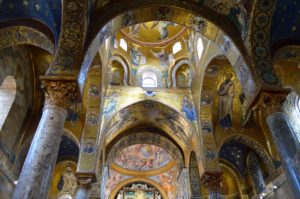
During a short stay in Palermo, we invite you to enter the cathedral consecrated to the Virgin of the Assumption![]() , the building that better than any other sums up the city’s history: erected in the early 7th century as a Christian basilica, 200 years later it was converted into a mosque by the Arabs, only to be transformed again into a church devoted to Christian worship by the Normans. Architecturally, the façade echoes the Catalan Gothic style, particularly in the portico.
, the building that better than any other sums up the city’s history: erected in the early 7th century as a Christian basilica, 200 years later it was converted into a mosque by the Arabs, only to be transformed again into a church devoted to Christian worship by the Normans. Architecturally, the façade echoes the Catalan Gothic style, particularly in the portico.

Inside Palermo Cathedral are the remains of Kings Roger II and Frederick II, as well as the remains of Saint Rosalie, known by all as the patron saint of the Sicilian capital.
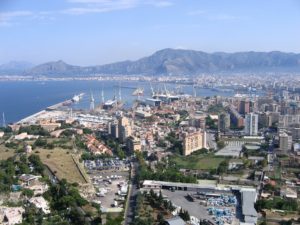
Another attraction popular with tourists is the catacomb found at the Capuchin monastery![]() , dating back to the 17th century.
, dating back to the 17th century.
The peculiar cemetery houses the embalmed remains not only of friars but also of celebrities and ordinary people. Finally, we suggest you visit Palermo’s district markets, in particular those of Ballarò![]() and Vucciria
and Vucciria![]() , as well as Borgo Vecchio
, as well as Borgo Vecchio![]() and Capo
and Capo![]() .
.
